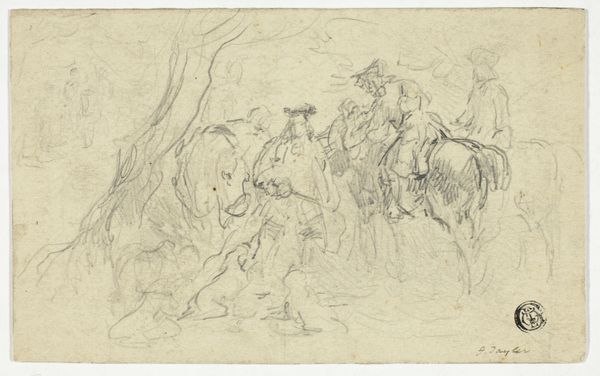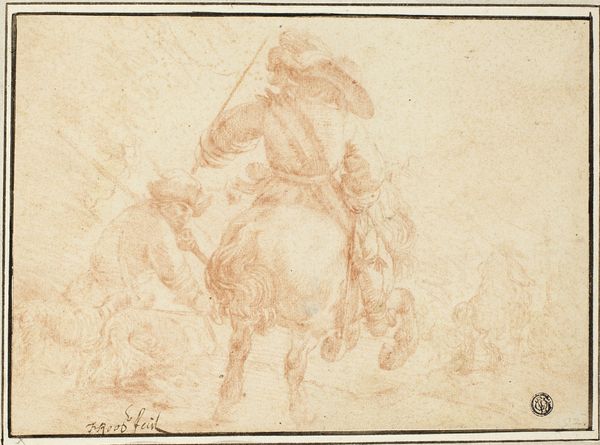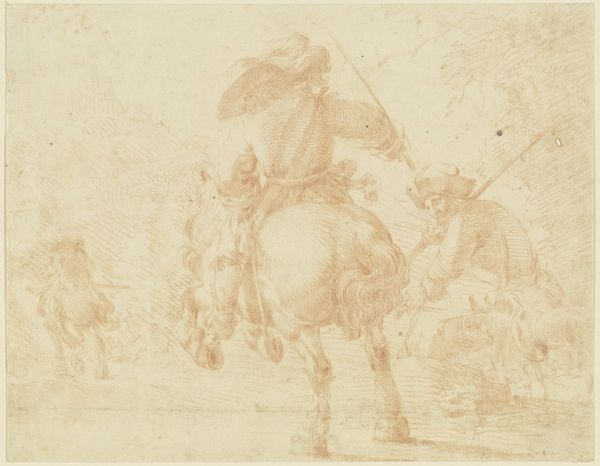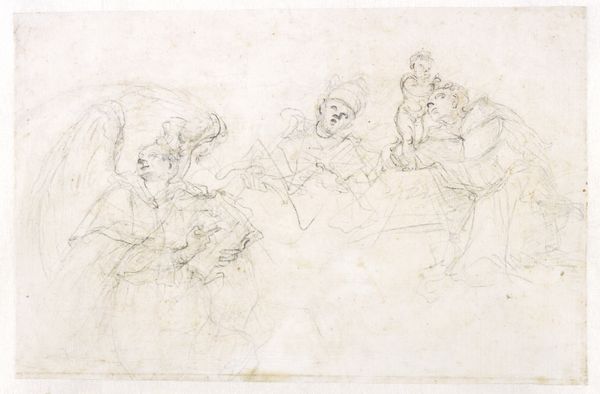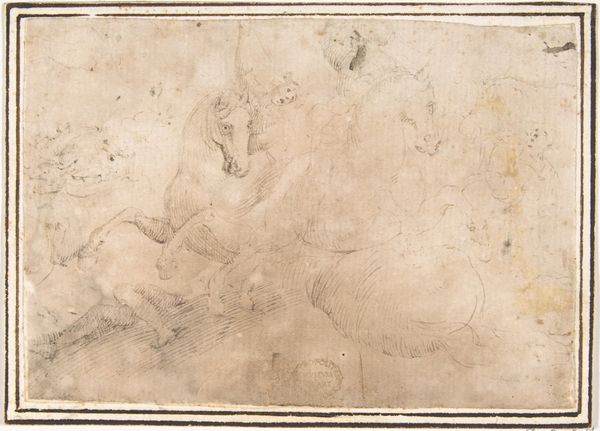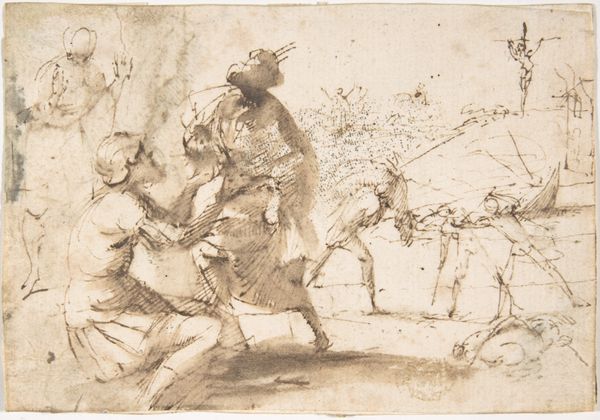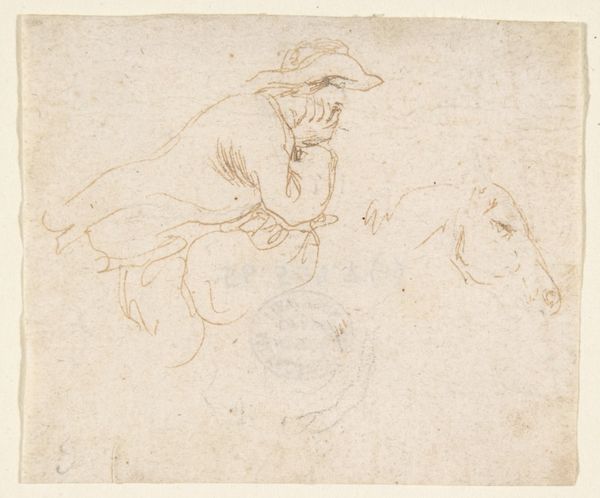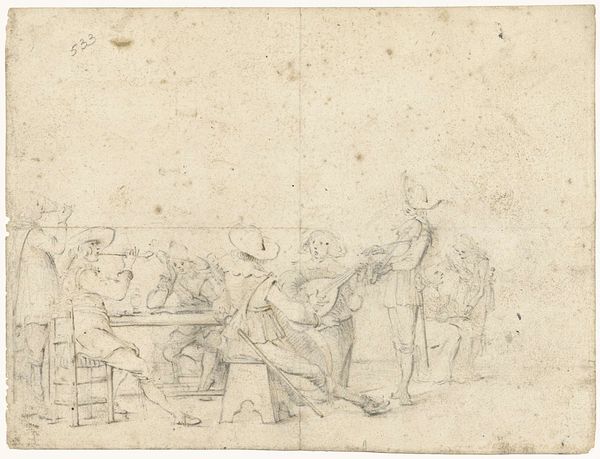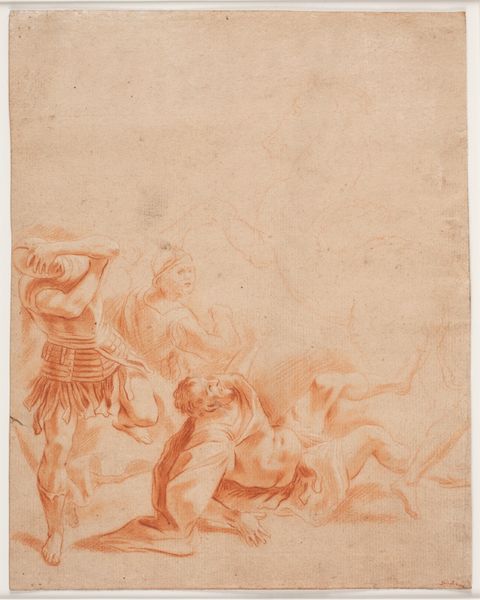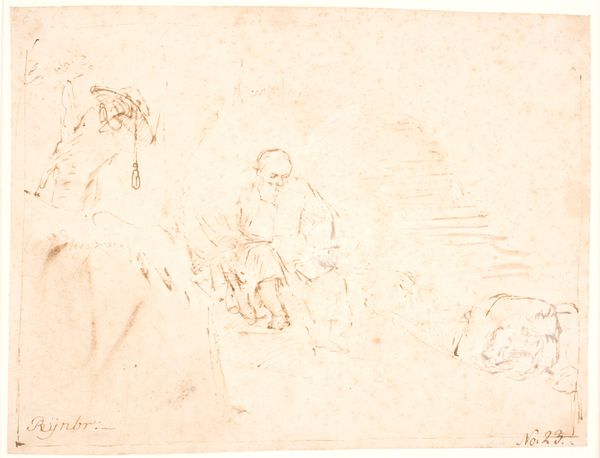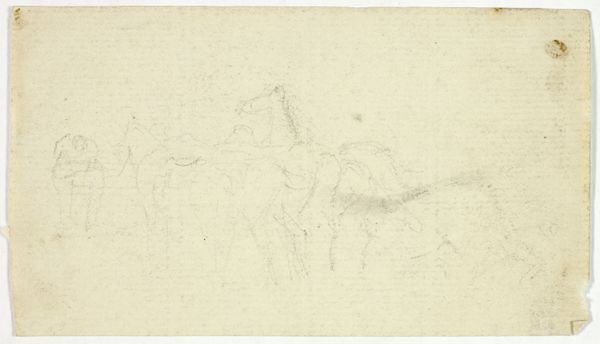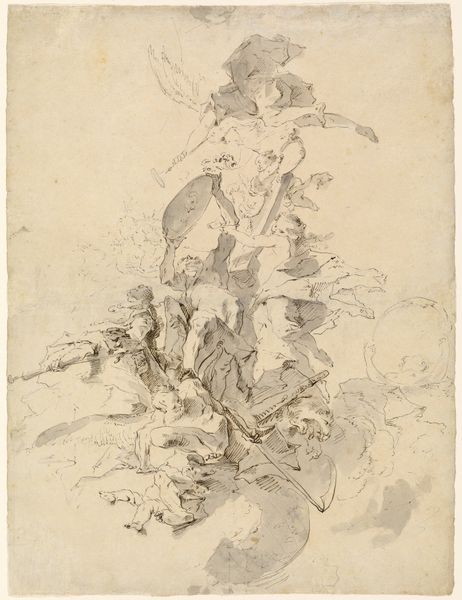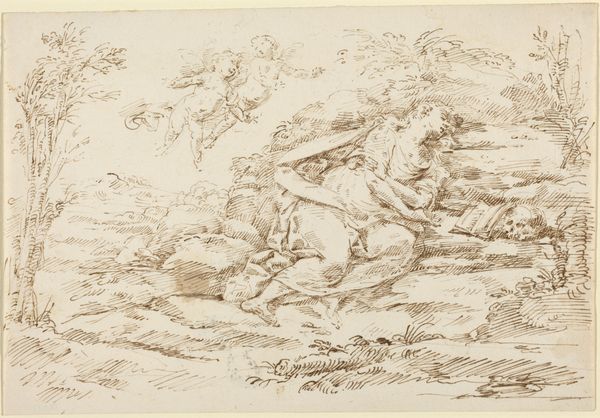
drawing, print, charcoal
#
drawing
#
baroque
# print
#
landscape
#
charcoal drawing
#
figuration
#
genre-painting
#
charcoal
Dimensions: 3-7/8 x 6-7/16 in. (9.9 x 16.3 cm)
Copyright: Public Domain
Curator: I’m immediately struck by the contrast – one figure actively engaged, rod in hand, poised for action, while the other reclines, seemingly lost in thought or simply at rest. Editor: And the scene itself, rendered with delicate charcoal lines in "Man Fishing and Man Reclining Against a Rock". This drawing, created sometime between 1600 and 1700 by an anonymous hand, captures a pastoral moment imbued with layered socio-historical weight. Consider the male figures: what societal constructs influenced their interactions with labor and leisure? Curator: I notice their hats, how both figures are wearing similar headwear – suggesting perhaps a shared social status, perhaps laborers or peasants engaged in quotidian tasks. Their shared symbolism hints at archetypes embedded deep within the collective unconscious. The rod becomes more than a tool; it's a symbolic link to humanity's primordial quest for sustenance. Editor: That pursuit of sustenance is fascinating in the context of Baroque landscape. We often see idealised versions of nature; what does it mean that this scene feels decidedly more workaday? How does this portrayal reflect the lives and labor of the working class during this period, challenging assumptions about leisure and pastoral life? Curator: Perhaps that very tension is the point. The reclining figure complicates our understanding of work itself, questioning if inactivity can also contribute meaning. What narrative weight do we, as viewers, project onto their dynamic, especially as labor and leisure intertwine in our present-day moment? Editor: I’m also compelled by the way the anonymous artist rendered them—they appear less as fully formed portraits and more like symbolic representations. There’s an ambiguity to the figures' emotions that allows each viewer to connect through individual associations, rooted in cultural memory. Curator: Yes, their very ambiguity becomes fertile ground for individual interpretation, a reflection of the social structures from which we each view the artwork. Their interactions—labor, repose, even hierarchy—are framed through lenses of gender, class, and social identity. Editor: It is such an intimate glimpse into the past. The drawing feels quiet, contemplative. The symbols feel so timeless, I am grateful for these visual dialogues that help preserve them. Curator: Exactly. It serves as a reminder that art's power often lies in sparking conversation, inviting us to engage with its history while considering our contemporary reality.
Comments
No comments
Be the first to comment and join the conversation on the ultimate creative platform.
